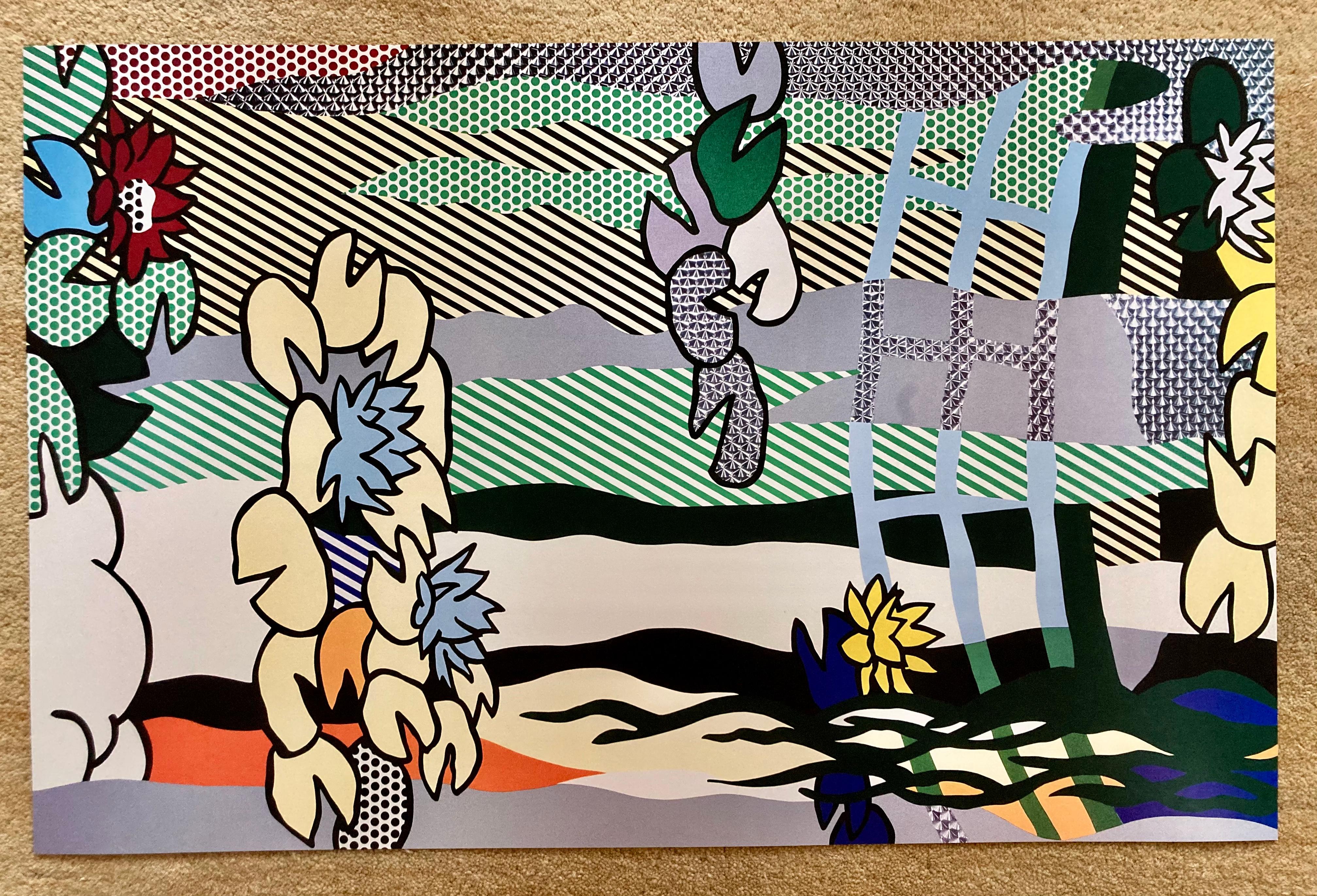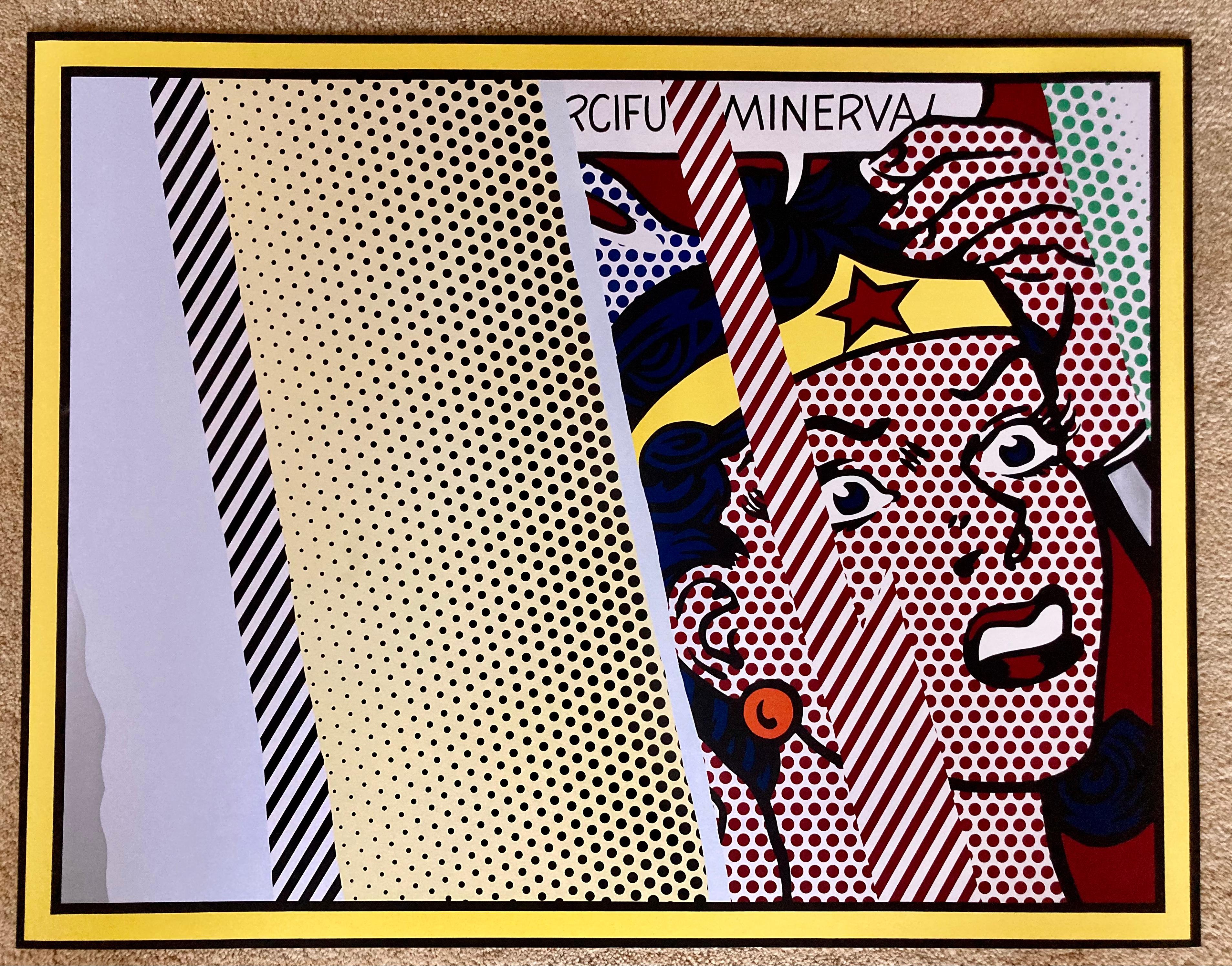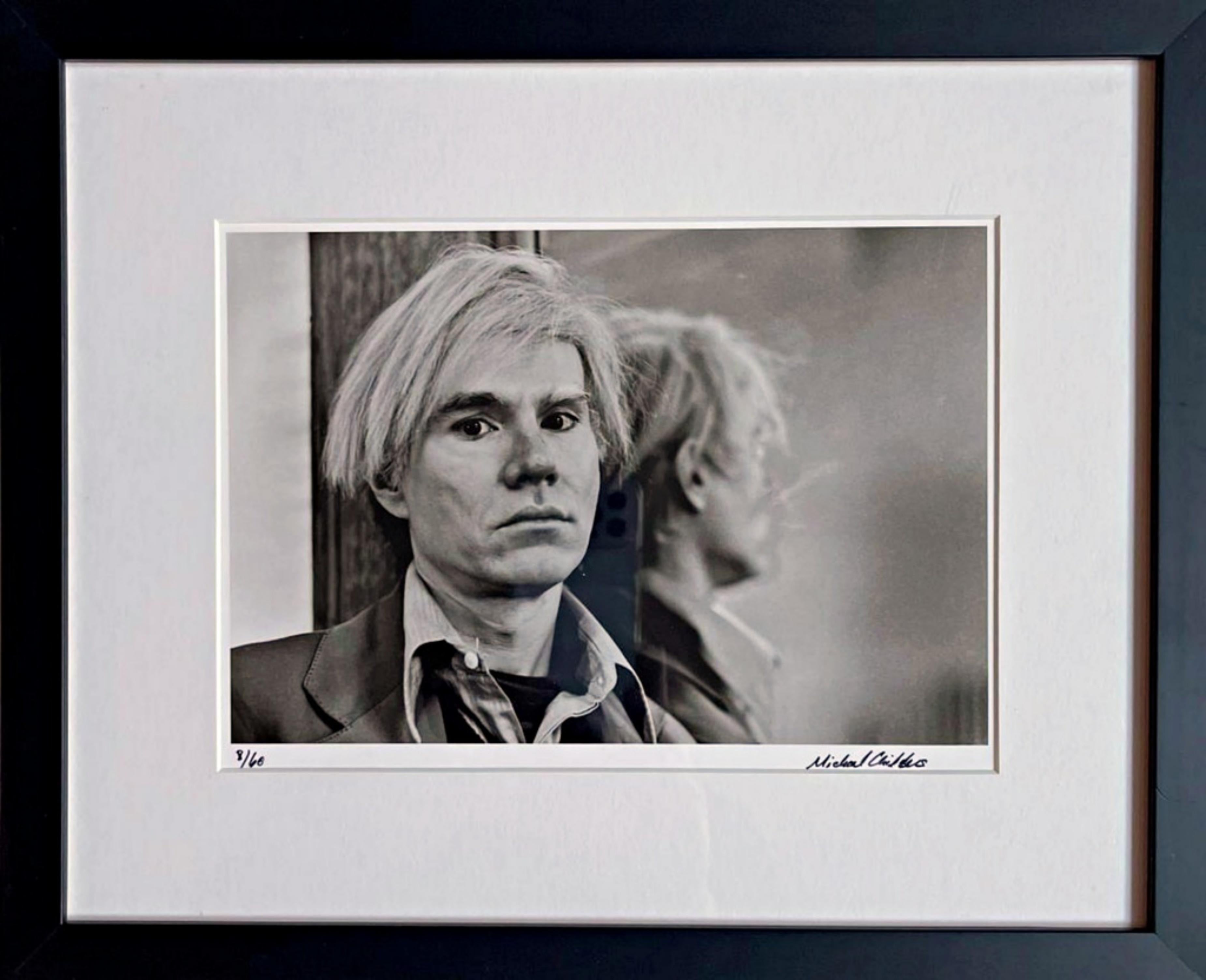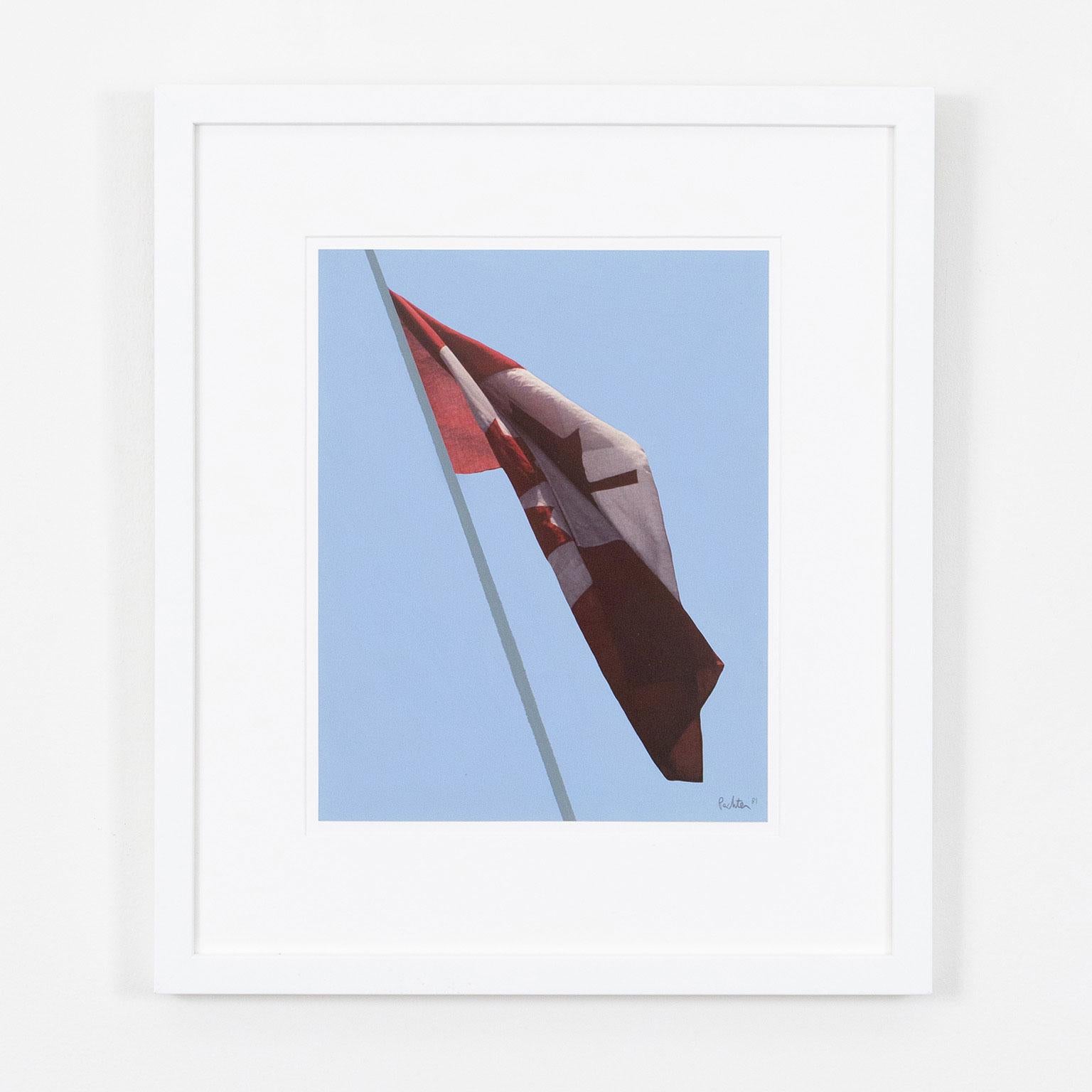Items Similar to Rare Large Harry Bowers Vintage C Print Photograph Ten Photographs Fashion Photo
Want more images or videos?
Request additional images or videos from the seller
1 of 11
Harry BowersRare Large Harry Bowers Vintage C Print Photograph Ten Photographs Fashion Photo1984
1984
About the Item
HARRY BOWERS
T E N P H O T O G R A P H S
I DON'T LOOK FOR PHOTOGRAPHS I INVENT THEM
I recall my first meeting with Harry Bowers in California a few years ago. As he produced his large-scale prints, I was at first flabbergasted, not only by their size, but by their seamless perfection. Technique appeared to be everything but then technique as technique simply vanished. After the first moment, technique was no longer an issue, but rather a passageway to the imagery.
Suffice it to say about Harry Bowers' working style that he is an obsessive man. Trained as an engineer, he has turned that discipline to art. His lenses, equipment and darkroom, much of it exactingly manufactured by himself to answer certain needs, serve the desire of the artist to take photographic technique to its ultimate perfection in invisibility and transparency. I respect obsession in art, and particularly in photography, because obsession in photography passes beyond the easy, middle ground of image making to a more demanding, more difficult, yet more rewarding end. Bowers' obsession is to eliminate "photography as technique." No grain, no decisive moments, no journalism, or, seemingly, direct autobiographical endeavors appear in his work.
Bowers is an artist of synthesis who controls his environment if only in the studio exactly to his liking. The images he creates are formal structures, saucy stories on occasion, which may offer hints of a darker, more frightening sexuality, but what you see is the end product of an experiment in which nothing save the original insight perhaps is left to chance.
We seem fascinated with the idea of replication of reality in art. Popular painting frequently reproduces a scene "with the accuracy of a photograph," and photographs may "make you feel as though you were right there." The very invisibility of the photographic medium is important to Bowers, in that it allows him to maneuver his subject matter without concern for rendering it in an obvious art medium which would interfere with the nature of the materials he uses. The formal subtleties of Bowers' recent work are as delicious and ambiguous in their interrelationships as the best Cubist collages, yet while those collages always suggest their parts through edge and texture, these photographs present a structure through a surface purity.
Bowers' earlier works, for example, the Skirts I Have Known series, were formed of bits of clothing belonging to Bowers and his wife or found at local thrift shops. These works fused an elegance of pattern and texture, reminiscent of feminist Miriam Schapiro or Lucas Samaras fabric paintings, with a sense of theater and, on occasion, high eroticism. These clothes are not simply mashed like baled rags into the glass fronted box which fronts the picture plane, but are actors in a subtle dumb show. Early on, Bowers was surprised that so few people took notice of the erotic element in his work, for it forms a distinct and important component of his images, and one which he has continued to exploit, albeit in different ways.
In the last few years Bowers' work has divided into two parallel modes; one continues his fascination with patterns, textures and stuffs pressed into the transparent picture plane, while the other is more directly anthropomorphic. In this second body of work, Bowers frequently uses articulated shadow figures in black or white, carefully adjusted within the image in a provocative way that is often sexually unsettling. But for all their explicit arrangement, these works may be less suggestive than his earlier clothing tableaus. These newer works are more about space, texture, and the extensions of photography, as well as being a comment on sexuality.
Bowers has always been fascinated with space, and recognizing that it cannot be rendered on a flat surface through the camera, he has set about to create an illusion of space on a shallow plane, a true trompe l'oeil achievement. Within these works, the space is still constructed upon the glass panel of the printing frame, but with elements collaged to its front surface as well as pressed within it. The forms, frequently large black and white photographs (a photographer's conceit on the use of photography), often include a seated or crouching figure dressed only in socks and cutoff dungarees, which add an element of personality. The figure and the way in which it is posed also add a quality of vulnerability to his images, not heretofore seen.
One of the best of these images, HB-28-80, uses a photograph of a figure crouching in a fetal position on a chair. The figure has been cut from its background, and the background, in turn, has been taped to the front of the glass pane while the figure, in perfect register with the background, is laminated behind the glass. One of Bowers' articulated shadow figures, one hand trying to hide its genitals, has been placed on top of the figure, also under the plane of glass. The shadow figure follows the curve of the spine of the photographed figure. One cannot help but feel not only the nakedness and tense embarrassment of these two figures, one real and the other schematic, but the anomalous suggestion of a man carrying a fetus within his body.
"I follow fashion. I have closets literally full of clothes. I am a full-blown Comme des Garçons and Prada freak. I love clothes themselves as objects, and I also love the glossies – my love of fashion is how I discovered Wallpaper magazine." Bowers' images extend their power in several ways. They are photographs, which are so pure in their technique as to be clear as water. They deal with precise replications of reality, but a reality which has been recontextualized into episodes of both formal and visceral ambiguity. The best of them are wonderful .. contrivances" -his word-and are as frightening in their psychological implications as they are elegant in their visual form.
Thomas H. Garver, Director Madison Art Center
- Creator:Harry Bowers (1938, American)
- Creation Year:1984
- Dimensions:Height: 20 in (50.8 cm)Width: 16 in (40.64 cm)
- Medium:
- Movement & Style:
- Period:
- Condition:
- Gallery Location:Surfside, FL
- Reference Number:1stDibs: LU38210687982
About the Seller
4.9
Platinum Seller
These expertly vetted sellers are 1stDibs' most experienced sellers and are rated highest by our customers.
Established in 1995
1stDibs seller since 2014
1,548 sales on 1stDibs
Typical response time: 1 hour
- ShippingRetrieving quote...Ships From: Surfside, FL
- Return PolicyA return for this item may be initiated within 3 days of delivery.
More From This SellerView All
- Large Ralph Massey California Pop Art Painting Vintage Americana, Toys Old CarsLocated in Surfside, FLARTIFACTS, 2015, Acrylic painting on paper artist mounted to panel, Hand signed and dated right side Dimensions: 24 x 43 x 1 ¾” This depicts an old cast iron Mickey Mouse, Felix the Cat, an old tin can of pop corn and other vintage, nostalgic, Americana. Born in 1938, Ralph Allen Massey is a talented American artist, sculptor and jewelry designer. Prior to the 1980s, in his work he preferred sculpture. However, in the early 1980s, together with the artist Sylvia Bennett, he opened the art studio “Raven”. using his creativity, has become the creation of jewelry decorations and jewelry boxes. An interesting collection was “Wildlife”, brooches, earrings and rings in the form of animals and birds. Also, no less interesting was the line of jewellery inspired by the characters of the books “Alice in Wonderland...Category
21st Century and Contemporary Pop Art Figurative Paintings
MaterialsAcrylic, Wood Panel, Laid Paper
- Original Pastel Drawing Flowers, Wallpaper Pattern and Decoration Pop ArtBy Joanne SeltzerLocated in Surfside, FLJoanne Seltzer was born in Philadelphia, Pennsylvania and raised in Charleston, West Virginia. After having majored in journalism at Northwestern University (she graduated in 1963), ...Category
21st Century and Contemporary Pop Art Landscape Drawings and Watercolors
MaterialsPastel, Archival Paper
- Hungarian Surrealism Pop Art Hebrew Silkscreen Judaica Print Jewish SerigraphBy Jozsef JakovitsLocated in Surfside, FLAbstract Hebrew Prints on heavy mould made paper from small edition of 15. there is a facing page of text in Hungarian folded over. Hard edged geometric abstract prints in color base...Category
1980s Pop Art Abstract Prints
MaterialsArchival Paper, Screen
- Surrealist Abstract Hebrew Aleph Pop Art Silkscreen Judaica Jewish SerigraphBy Jozsef JakovitsLocated in Surfside, FLAbstract Hebrew Prints on heavy mould made paper from small edition of 15. there is a facing page of text in Hungarian folded over. Hard edged geometric abstract prints in color base...Category
1980s Pop Art Abstract Prints
MaterialsArchival Paper, Screen
- Surrealist Abstract Hebrew Shabbat Pop Art Silkscreen Judaica Jewish SerigraphBy Jozsef JakovitsLocated in Surfside, FLAbstract Hebrew Prints on heavy mould made paper from small edition of 15. there is a facing page of text in Hungarian folded over. Hard edged geometric abstract prints in color base...Category
1980s Pop Art Abstract Prints
MaterialsArchival Paper, Screen
- Chine Colle Photo Collage Assemblage Art Jockey, President Clinton InvitationBy Ivan ChermayeffLocated in Surfside, FLIvan Chermayeff born London, United Kingdom, 1932 Chermayeff was one of the greatest American graphic designers, the son of the Russian born, British architect Serge Chermayeff. Ivan Chermayeff Graduated from the Phillips Academy of Andover, Massachusetts in 1950. He studied at Harvard until 1952, and the Institute of Design (New Bauhaus) until 1954. Graduated from the Yale School of Arts and Architecture in 1955 with a Bachelor of Fine Arts. The same year he did a short apprenticeship with Alvin Lustig—a pioneer of American graphic design—and then moved on to CBS as Assistant Art Director in record cover design. In 1956 he co-founded Brownjohn, Chermayeff & Geismar Associate, with Robert Brownjohn and his former schoolmate Tom Geismar. In 1959 Brownjohn left and the studio changed to Chermayeff & Geismar Inc. It soon became one of the best-known design firms worldwide. The firm produced over six-hundred marks, and they were among the very first to develop an abstract trademark (Chase Bank, 1960), still in use today. In 1964 they designed the outstanding corporate identity of Mobil Oil, that is one of the most recognizable identities ever. From its foundation, the studio served major companies including Giorgio Armani, Barneys, Hearst, MoMA (Museum of Modern Art), National Geographic, NBC (National Broadcasting Company), PBS (Public Broadcasting Service), Rockefeller, and others. Recently, Serge Haviv joined as a new partner and the firm changed to Chermayeff & Geismar & Haviv. Besides his design profession, Chermayeff is a talented illustrator artist and collagist. Many graphic pieces he made show a perfect balance of rational logics with imagination, featuring both abstract geometric shapes and figurative images. His collages require a same sense of witty assemblage, where gathered information, like scraps of paper, stamps, and Polaroid pictures combine as fragmented clues to a greater message. The collages often take the shape of people, whose facial features are born of scraps and daily ephemera. They are amusing and infinitely thought-provoking; as Chermayeff has said, “Collages make it possible for everything to be something else.” Board overseers at Parsons School of Design and trustee at New School University from 1988 to 2002. Visiting professor at Cooper Union, University of California, and Kansas City Art Institute. President of AIGA (American Institute of Graphic Arts) from 1963 to 1966. Trustee of MoMA (Museum of Modern Art) from 1965 to 1986. Member of the board of directors of IDCA (International Design Conference in Aspen) from 1968 to 1999. Board Director at Municipal Art Society of New York in 1972-76. Member of AGI (Alliance Graphique Internationale) since 1978. Board Director at Smithsonian Institution from 1988 to 1996. He was elected to the Hall of Fame of ADC New York (Art Directors Club) in 1982. Trustee of the Archives of America Art in 1987-90. Royal Designer for Industry since 1992. He was awarded numerous prizes including the Industrial Art Medal from AIA (American Institute of Architects) in 1967, the Philadelphia College of Art Gold Medal in 1971, AIGA Gold Medal (American Institute of Graphic Arts) in 1979, the President’s Fellow Award from the Rhode Island School of Design in 1981, the First International Design Award from Japan Design Foundation in 1983, the Yale Arts Medal in 1985, the Distinguished Service Award from New School University in 1999, the Society of Illustrators Gold Medal in 2002, the Tokyo Type Directors Club Award in 2004, and the National Design Award for Lifetime Achievement in 2014. He also received a honorary doctorate in law from the Portland School of Art in 1981, and two honorary doctorates in fine arts from the Philadelphia University of Arts and the Corcoran Museum of Art, Washington in 1991. Along with Seymour Chwast, Sid Chafetz, Saul Bass, Milton Glaser, Paul Rand, Ikko Tanaka...Category
1960s Pop Art Mixed Media
MaterialsPaper
You May Also Like
- Roy II.By Roy LichtensteinLocated in Slovak Republic, SKA Hahnemuehle Fine Art Print, attributed to Roy Lichtenstein. Editioned of 25.Category
Mid-20th Century Pop Art Abstract Prints
MaterialsPhotographic Paper, Color, Digital, Archival Pigment
- Roy IV.By Roy LichtensteinLocated in Slovak Republic, SKA Hahnemuehle Fine Art Print, attributed to Roy Lichtenstein. Editioned 25.Category
Mid-20th Century Pop Art Abstract Prints
MaterialsPhotographic Paper, Color, Archival Pigment, Digital Pigment
- Sexy Doughnut, Fast Food Contemporary Still Life on Yellow Background, GicléeBy Ryan RivadeneyraLocated in Barcelona, ES"Sexy Miami Futuristic Cocktail Lounge" is a series of photographs by Ryan Rivadeneyra inspired by the Art Deco colors of Miami that show beautiful objects and textures arranged meti...Category
2010s Pop Art Still-life Prints
MaterialsPhotographic Film, Archival Ink, Photographic Paper, C Print, Digital, G...
- Jasper Johns and Leo Castelli, legendary Pop artist and his dealer, FRAMEDBy Hans NamuthLocated in New York, NYHans Namuth Jasper Johns and Leo Castelli, ca. 1985 Color Photograph Frame included Provenance: from the Marjorie and Anselm Talalay collection, Cleveland, OH. Rare original color p...Category
1980s Pop Art Color Photography
MaterialsPhotographic Paper
- Andy Warhol in New York, 1976, 2007, hand signed photograph 8/60 for MuseumBy Michael ChildersLocated in New York, NYMichael Childers Andy Warhol in New York, 1976, 2007 Photographic print Signed and numbered 8/60 on the front in black felt tip marker Frame included ...Category
Early 2000s Pop Art Black and White Photography
MaterialsPhotographic Paper, Permanent Marker
- Painted Flag: Preparatory #2BBy Charles PachterLocated in Toronto, OntarioCharles Pachter (b. 1942) is one of Canada’s most collected and cherished artists. His uplifting and patriotic images have independently earned their place in the nation’s museums from coast to coast. In the spring of 1981, Pachter began working on his most iconic and celebrated series, the Painted Flag. Seven years before Photoshop, he traveled around Toronto photographing Canadian flags...Category
1980s Pop Art Photography
MaterialsPhotographic Paper
Recently Viewed
View AllMore Ways To Browse
Photographs Of People
Photographs Space
Ten Vintage
California Photograph
Vintage Style Photographs
Photographs Directors
Very Large Photograph
Vintage Looking Photographs
Size Ten
Photograph 1980
Set Of Photographs Framed
Photograph 1989
Photograph Of H
Plane Photograph
Suggestive Art
Train Photograph
Lessing Photographs
Photographs Of Theaters





